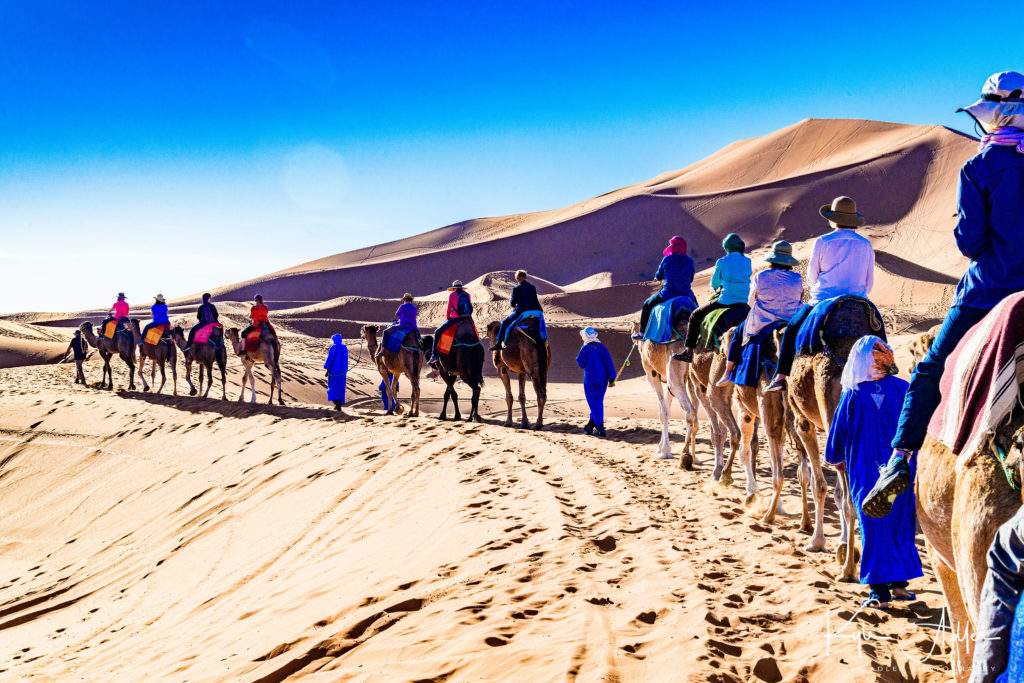
Iconic Moroccan scene: No visit to the Sahara Desert would be complete without experiencing a dromedary ride across the sand dunes. Ever try to photograph while clinging on for dear life atop the lurching single hump of a dromedary? I have. The best advice for shooting in situations like this one is to preset your camera to a very fast shutter speed in order to freeze the motion, use your camera’s or lens’s stabilization feature, and capture a few bursts of many shots in quick succession. You’re unlikely to get any award-winning photos while traveling on camelback, but using these tips you can at least capture some of the adventure of the experience.
My wife and I recently returned from a lovely adventure traveling through Morocco. OAT’s Morocco Sahara Odyssey itinerary took us from the administrative capital of Rabat to the ancient cultural capital of Fez, to the thrilling and otherworldly Sahara Desert including a stay in a luxurious private tented camp nestled among the sand dunes, into the High Atlas Mountains, then on to the quintessential overload experience for all the senses that is Marrakesh, and finally to fabled Casablanca. Throughout this adventure we had the opportunity to meet and learn from local Moroccan people of diverse backgrounds and trades. Morocco is a special destination for photographers of all levels: whether you’re shooting with 40 pounds of professional gear (and the backache to prove it) or just using your phone’s camera, this is an adventure that will engage your creativity to capture sweeping desert landscapes, street scenes among the vibrant and bustling souks, ancient cityscapes, lovely portraits, and exotic wildlife.
Our Moroccan adventure began in the capital city, Rabat. Rabat boasts a twelfth-century mosque and minaret that would have been the world’s largest had they been completed.
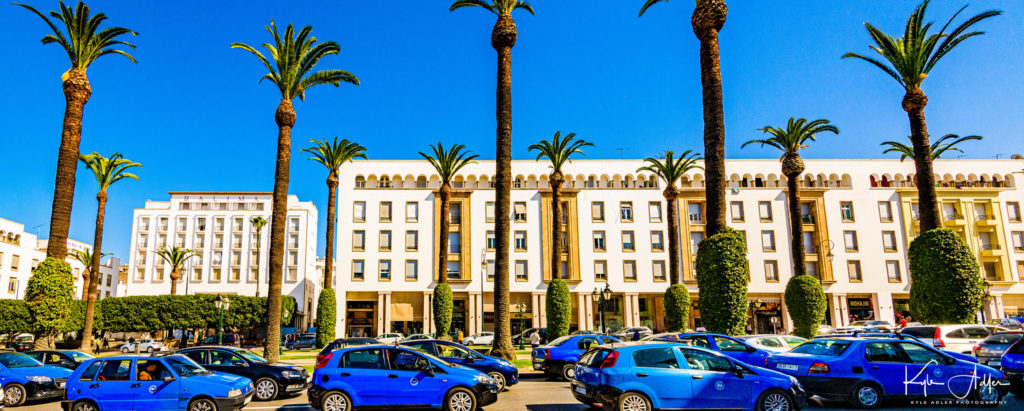
When strolling through any city I’m always on the lookout for interesting patterns of color and texture. This bustling urban scene impressed me with its repeating pattern of blue taxicabs framed by manicured palm trees and whitewashed buildings.
From Rabat we traveled to ancient Fez, with its rich Moroccan cultural legacy.
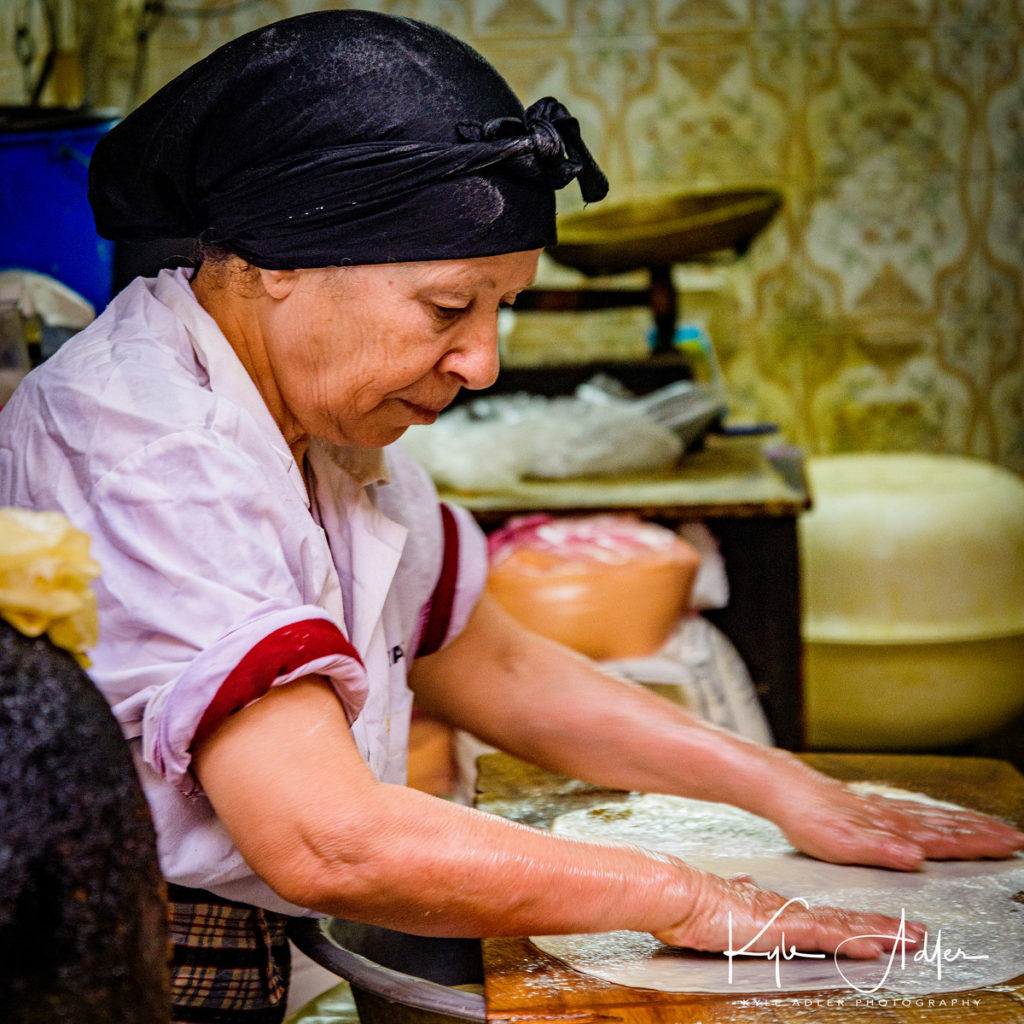
At a souk (marketplace) in the old part of Fez, a vendor prepares thin layers of dough for cooking. Many photographers expect Morocco to be a challenging destination for portraiture because some of its people hold to traditional beliefs and would prefer not to be photographed. We found this to be only partly true. As in any other country, in Morocco one should always ask permission before shooting closeup photos including any person. But in today’s Morocco, particularly in urban settings, people have smartphones and are quite accustomed to being photographed. Your trip experience leader can act as a local “fixer,” helping introduce us to the people we meet and translating for us to help pave the way for photography. But with or without a local guide, the traveler who makes an effort to get to know their subject first is likely to be rewarded with a richer understanding of the local culture and some lovely portraits by which to remember its people.
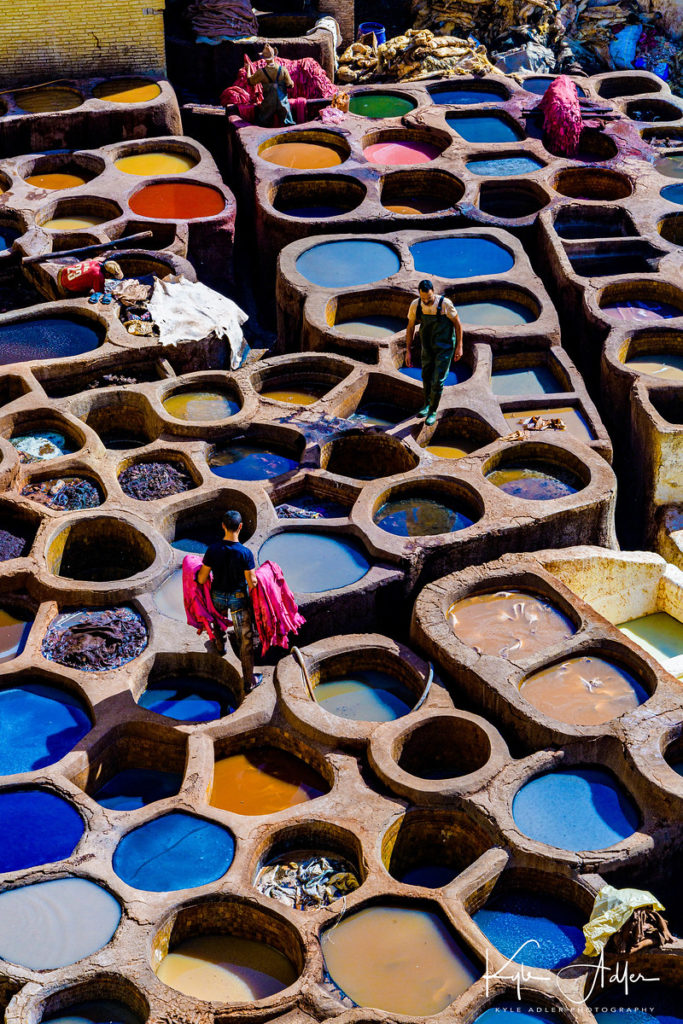
Traditional leather dyeing process at a tannery in Fez. The tannery staff take pride in continuing to employ natural methods as opposed to the chemical processes used by most modern tanneries. As we looked down on the dyeing vats from the roof of the tannery’s adjacent four-story shop building, I was struck by the stunning array of vibrant colors. I used a moderate telephoto lens to compose the image and underexposed the shot by one stop to concentrate the saturation of the colors.
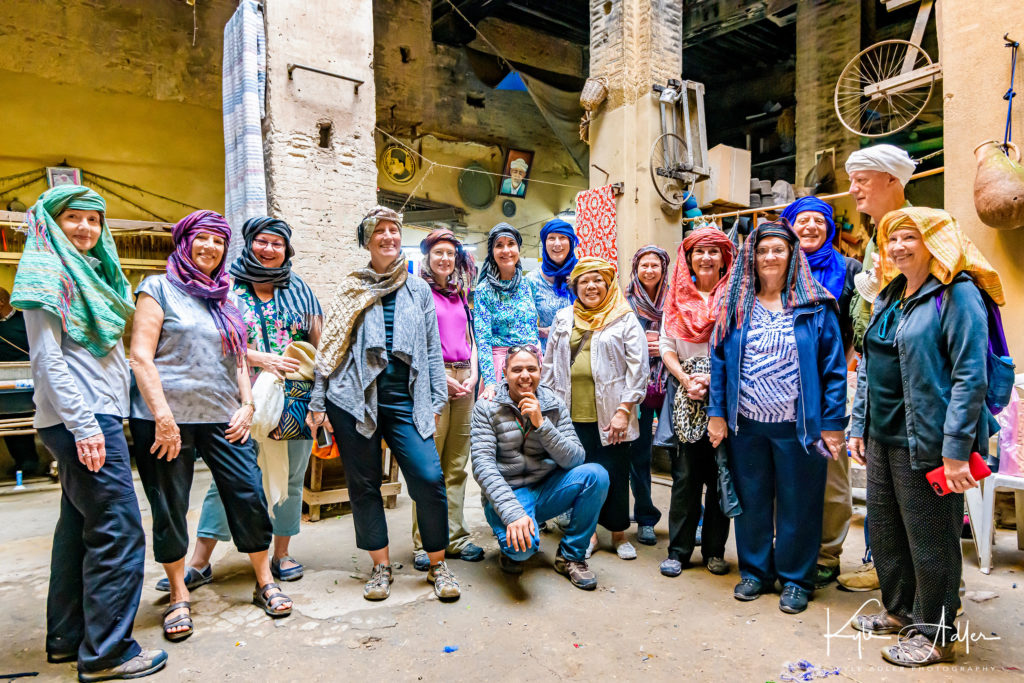
Our intrepid group poses wearing traditional Moroccan turbans at the caravansary, an ancient rest stop along the trade route where camels were fed and sheltered on the ground floor while their people were taken care of on the upper floors. It’s always fun to capture some shots of the entire group while traveling. Here, I used a wide-angle lens to include everyone along with the surroundings, a technique referred to as an environmental portrait. The trick when photographing people through a wide-angle lens is to keep the lens exactly level to the ground rather than pointing it up or down, which causes unflattering distortion.
After spending several days in Fez, we traveled through the Middle Atlas Mountains into the Sahara Desert. The stark, otherworldly features of the desert were a highlight of the trip. Far from being a desolate and lifeless place, the Sahara is teeming with flora and fauna and home to some of the friendliest people we’ve met.
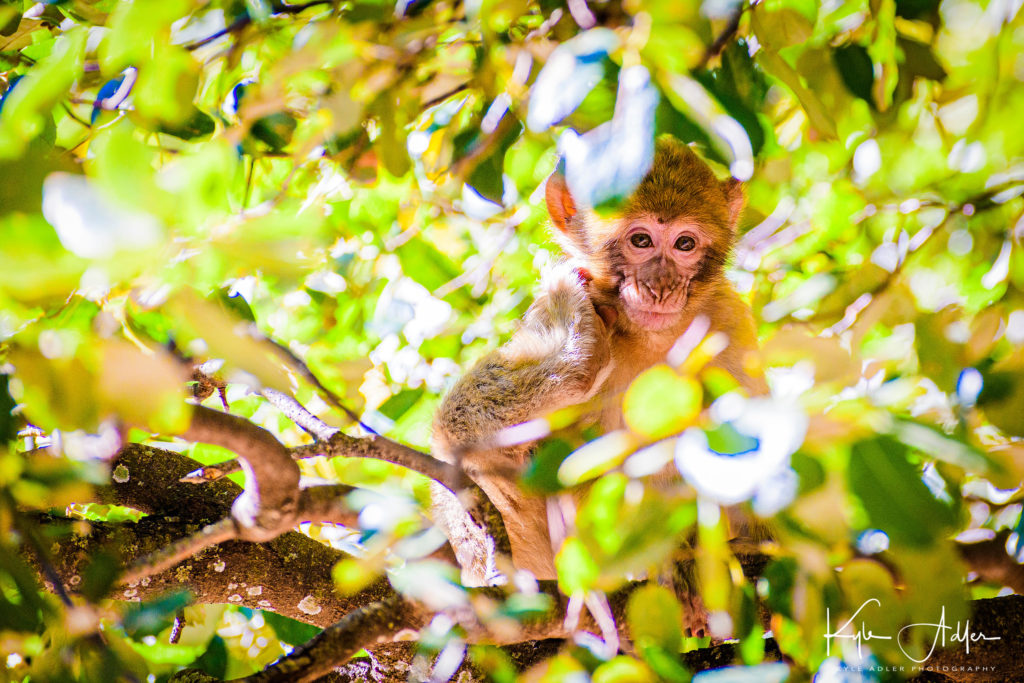
Traveling through the Middle Atlas Mountains between Fez and Erfoud, we stopped to view Barbary apes in their habitat in a cedar forest within a national park. Tips for better wildlife photography include using a long telephoto lens to allow shooting from a safe distance so as not to endanger you or your subject, selecting a high ISO setting and a fast shutter speed, and grabbing a burst of many shots so as to increase the chances of walking away with at least one really good one.
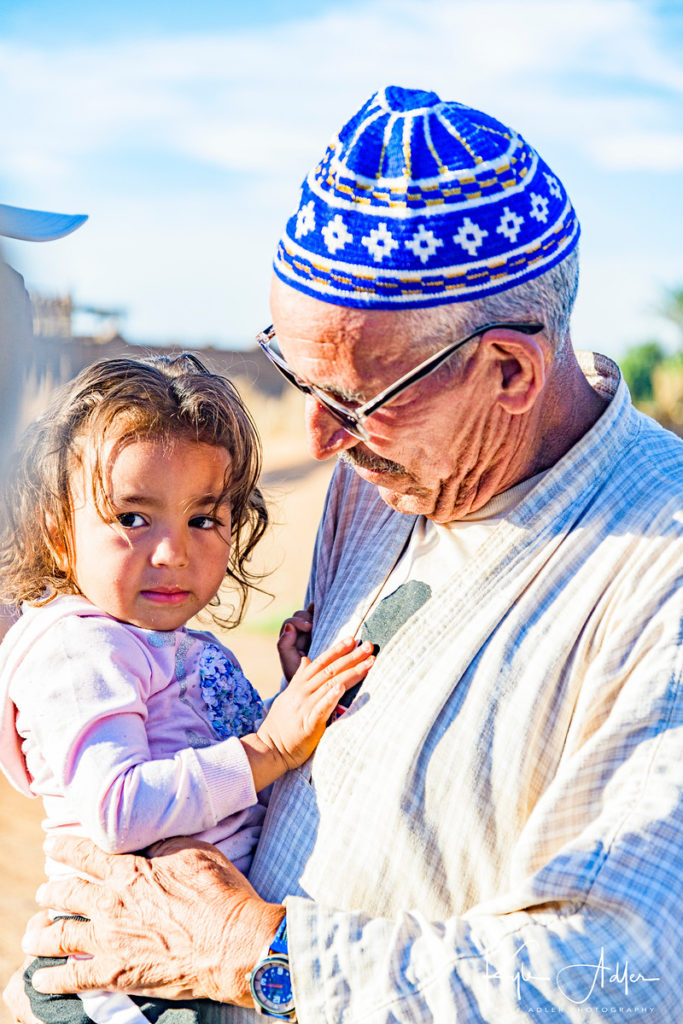
Meet Moha, whose father many years ago found ground water just below a seemingly lifeless patch of land in the Sahara Desert and decided to plant there. Moha, shown here with his granddaughter, took over the farm from his father and now tends to more than 150 date trees. He showed us his entire impressive operation. When making portraits of two people, it’s best to wait for them to relax and then to catch the moments when they are interacting with each other and not the camera. I used a wide aperture setting (small f-stop number) to soften the background, which helps emphasize the people in the foreground.
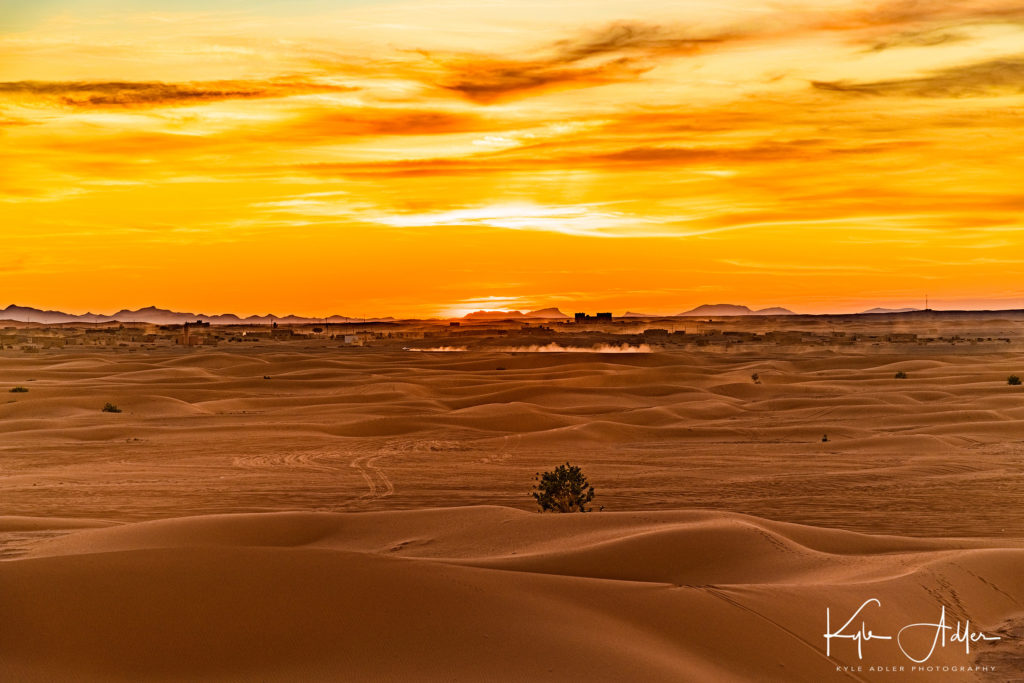
Hiking to the top of a massive sand dune near our tented camp to enjoy happy hour, I captured this landscape photo of a Saharan sunset. Not all landscapes need to be photographed using a wide-angle lens. In this case I wanted to compress the apparent distance between the far-off layers of dunes, so I used a moderate telephoto lens. Underexposing by one stop helped concentrate the colors in this scene.
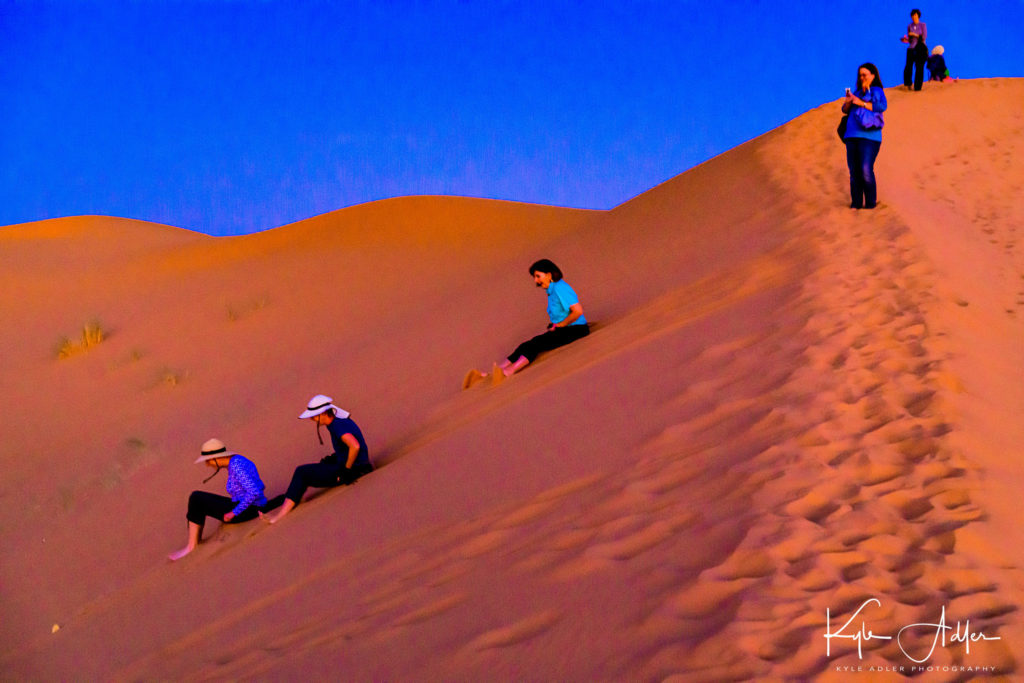
Sand surfing down from our perch on the dunes. Because this photo was shot in almost total darkness well after sunset, I had to boost my camera’s ISO sensitivity setting. This allowed the use of a small enough aperture (high f-stop number) to keep the whole scene in sharp focus and a fast enough shutter speed to freeze the action.
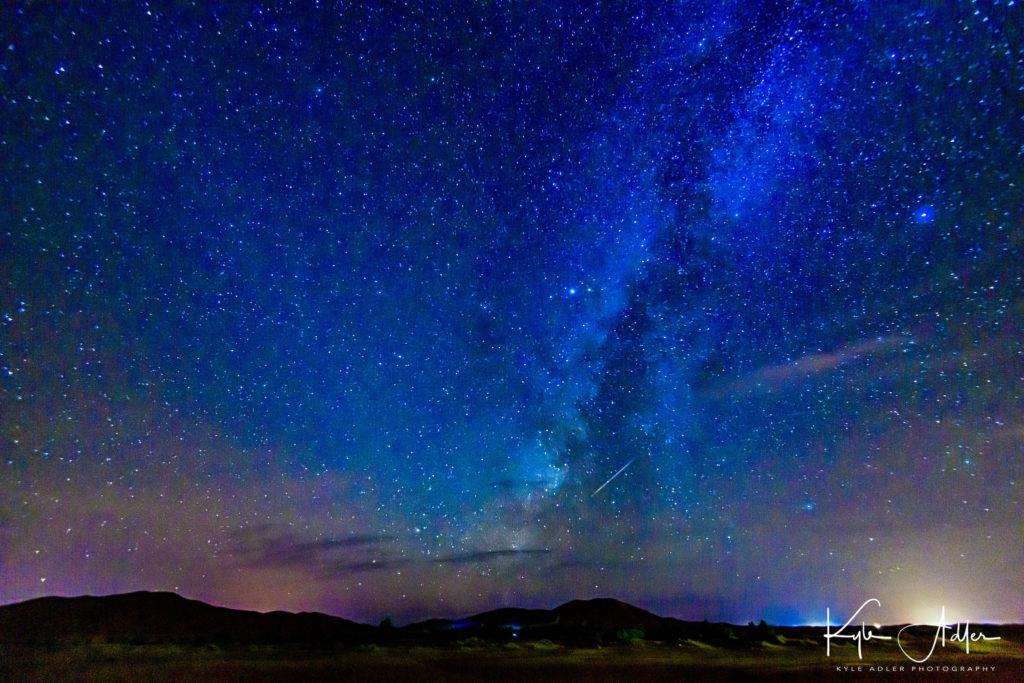
Spectacular night sky in the middle of the Sahara Desert featuring a brilliant Milky Way and a meteorite above rolling sand dunes. Because our private tented camp was situated in a remote spot among the dunes, I had only to walk a few steps from our tent to find a dark-sky location for night photography. Today’s cameras are much better at capturing nighttime scenes, but there are still some complexities in getting your shot: use a sturdy tripod and a remote shutter release to keep your camera stationary, employ a wide-angle lens to include more of the sky, focus manually so that the stars appear sharp, and select a fast ISO setting and wide aperture (small f-stop number) to allow a shutter speed of no longer than twenty seconds. A longer exposure risks that the stars will move during your shot.
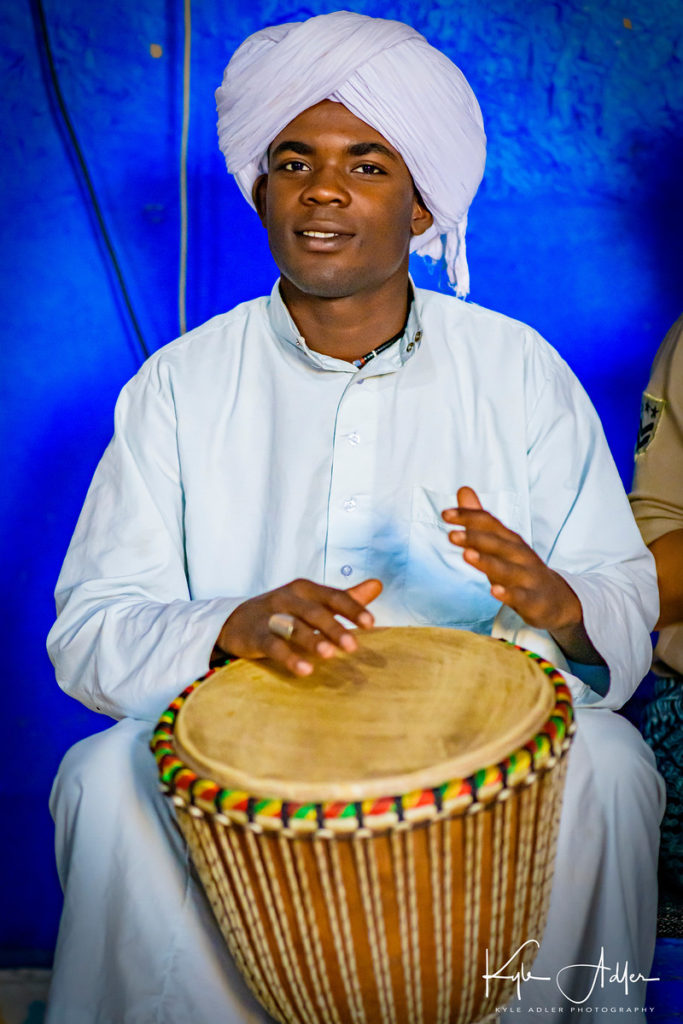
This region of the Sahara is known for its Gnawa musicians. Originally from Sub-Saharan Africa, their ancestors escaped slavery and migrated north, bringing ancient folk traditions with them. Today pre-Islamic and more modern musical forms are integrated into their performances. The famous photojournalist Robert Capa once said, “If your photos aren’t good enough, you’re not close enough.” This is not universally true but it’s certainly a helpful reminder when shooting portraits that we shouldn’t be afraid to get really close to our subjects—assuming we have their permission and we’re not disrupting their activities. I used my go-to portrait lens, a moderate (85mm) telephoto prime (non-zoom) lens with a very wide aperture (very low f-stop number) to be able to get this closeup without disturbing the performance. The wide aperture allows a faster shutter speed to freeze the motion and also softens the background so that the drummer’s features are emphasized.
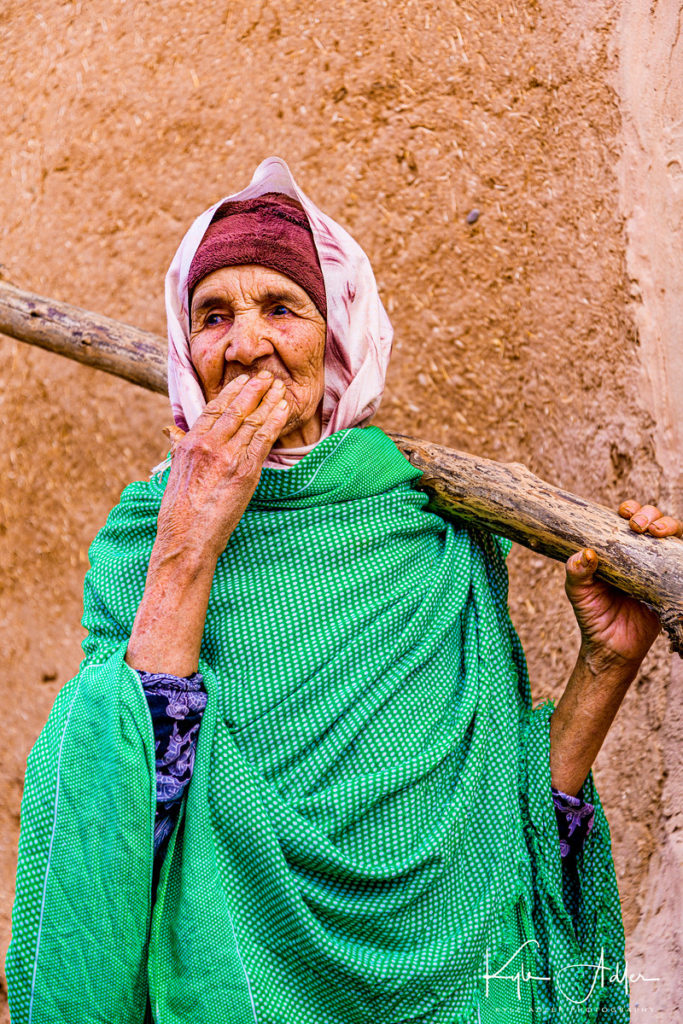
We had a chance meeting with Aicha as she carried a tree she planned to use for firewood through the alleys of the village of Tinjdad. Our wonderful trip experience leader Mohammed broke the ice by asking Aicha some questions about her life and her activities that day. She had quite a few questions for us, too, and found the interaction to be very amusing. With her permission I made this delightful portrait that expresses her wisdom and curiosity about the people she has just met.
En route from the Sahara to the ancient and chaotic city of Marrakesh, we visited several villages and met some of their people.
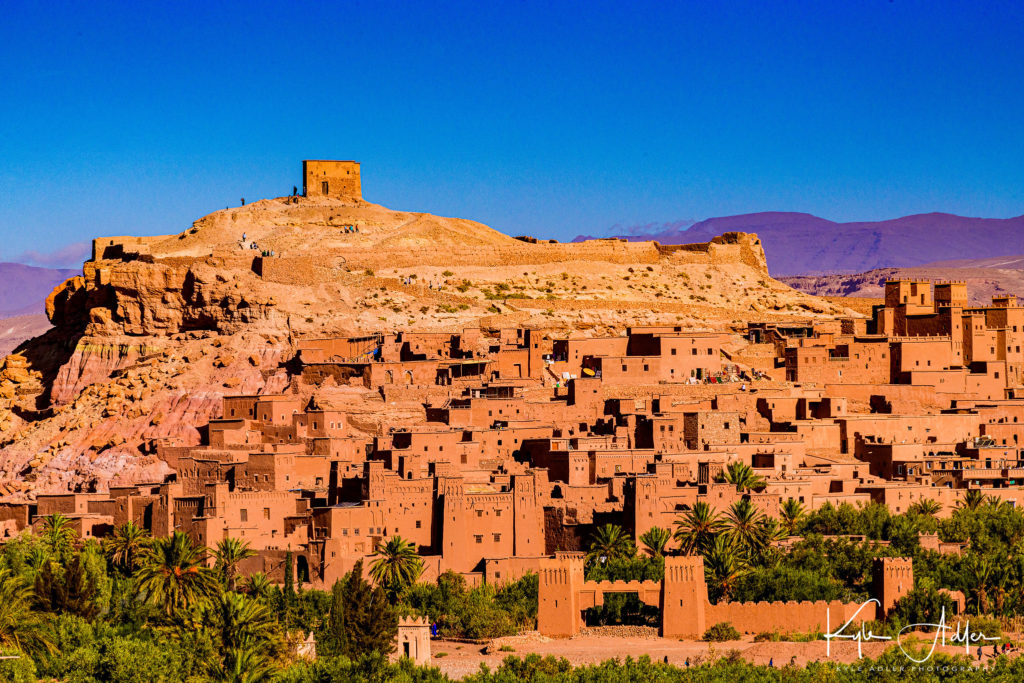
An eleventh-century village and fortress that is now a UNESCO World Heritage Site. For village scenes, I find it’s helpful to look for a while without the camera and wait for an interesting visual story to come to mind. Only then do I choose the right focal length lens to tell the story. There are many ways to photograph an historical place, so be sure to find a story that has meaning to you.
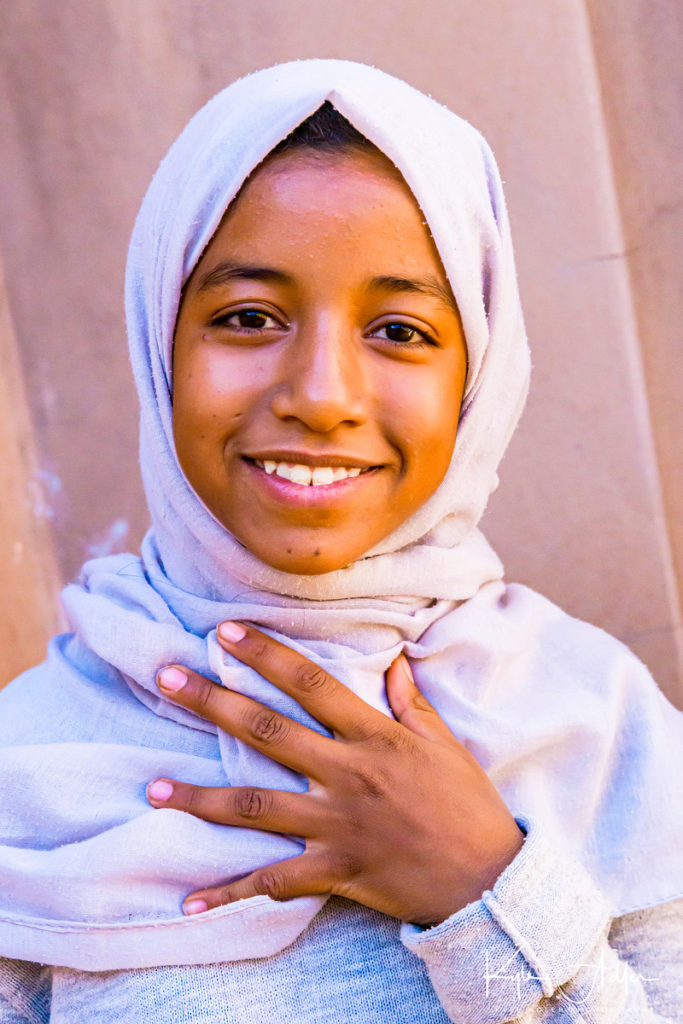
In the village of Asfalu, Ahmed and his wife Leila welcomed us into their home. I love this portrait of one of their daughters, 13-year-old Nouhayla. After getting to know each other, she agreed to pose for the photo and I suggested we move into the courtyard outside their home where there was an uncluttered background. The background is at least as important as the foreground subject when composing a photo, so don’t be shy about moving your subject.
Marrakesh is a place unlike any other. Its ancient souks inhabit the narrow alleys of the medina (old city). Jemaa el-Fnaa Square, a UNESCO World Heritage Site in the heart of town, bustles day and night with thousands of visitors from near and far.
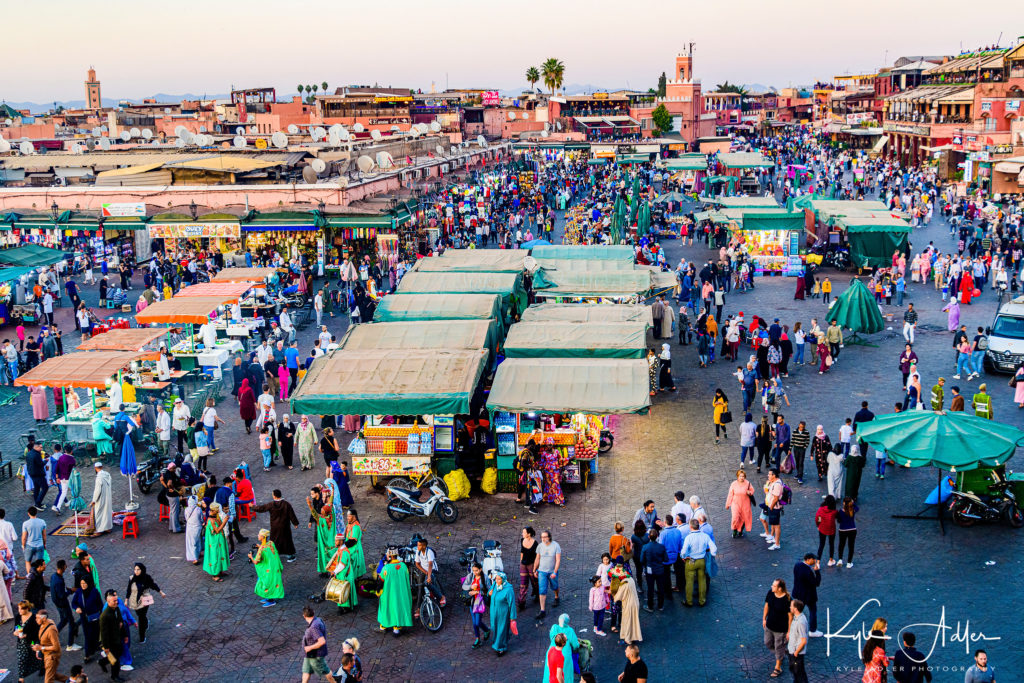
We enjoyed coffee at a café atop a nearby building and were afforded a panoramic view at sunset over Jemaa el-Fnaa Square. Any camera yields great results when photographing a scene this vibrant and lively. Just choose a composition that speaks to you and fire away. I do recommend checking that the horizon line is level while composing your shot, as it’s easy to get carried away with the excitement of the scene and to shoot with an uneven horizon.
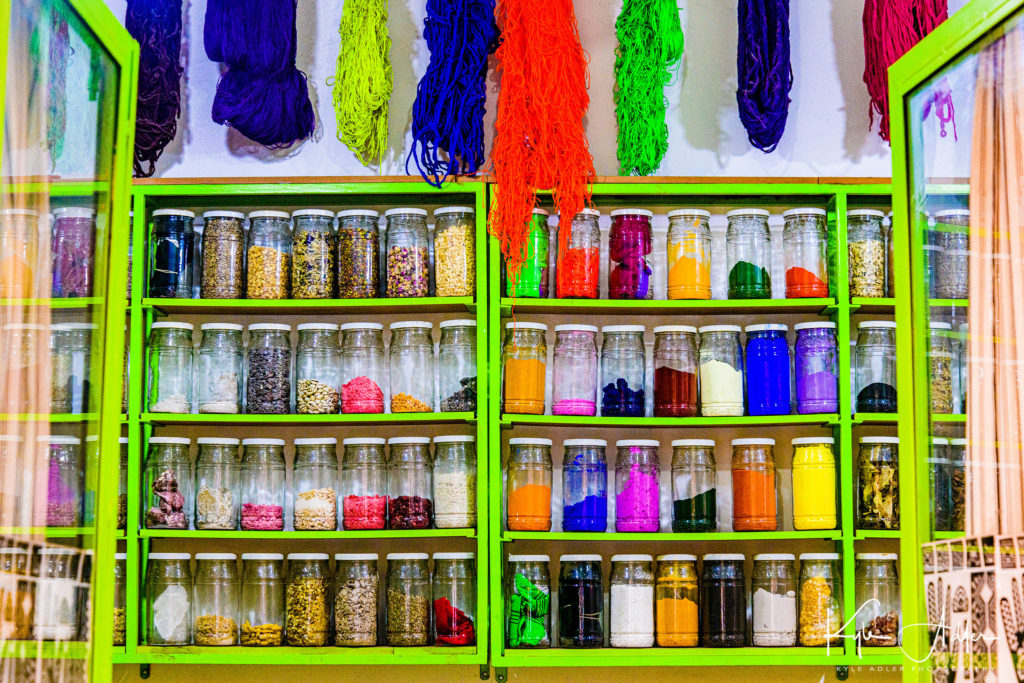
One of countless thousands of vendor stalls along the labyrinthine alleys of Marrakesh’s medina. I was intrigued by the array of identically shaped jars, each with its own vibrantly colored contents. To ensure the lines of the shelves were not distorted, I used a medium telephoto lens and shot from slightly further back. Wide-angle lenses have the effect of distorting parallel lines unless great care is taken when composing the photo.
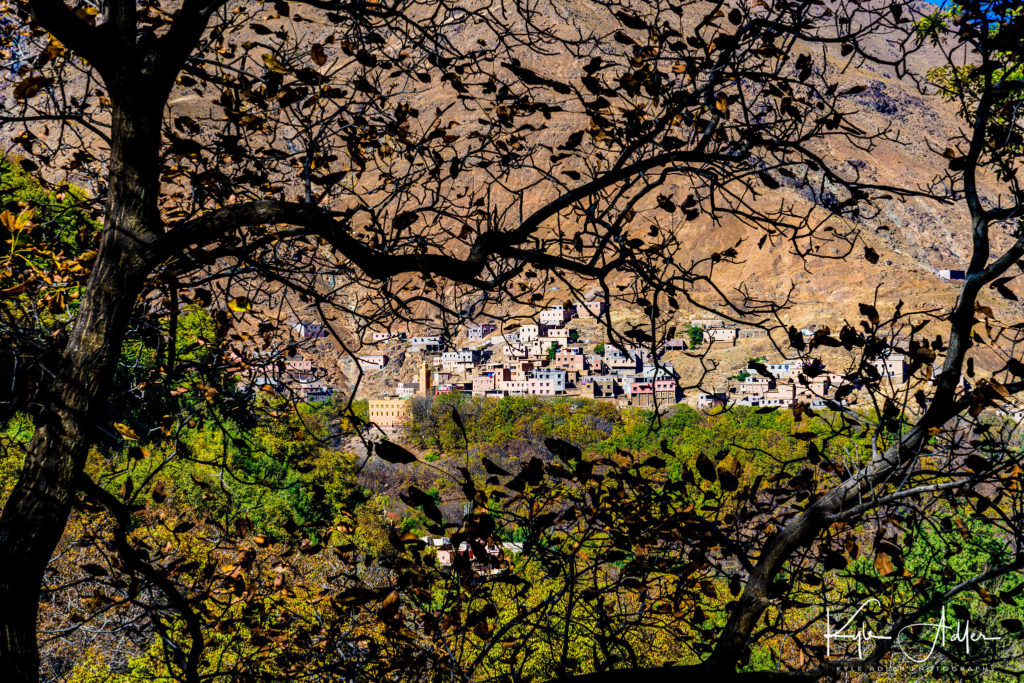
A few travelers from our group used our free time to hike among the hill towns of the Imlil Valley in the High Atlas Mountains. We were afforded glorious views of nearby villages as we trekked along the narrow trails. This scene of a village at the base of the mountain appeared around a bend in the trail.
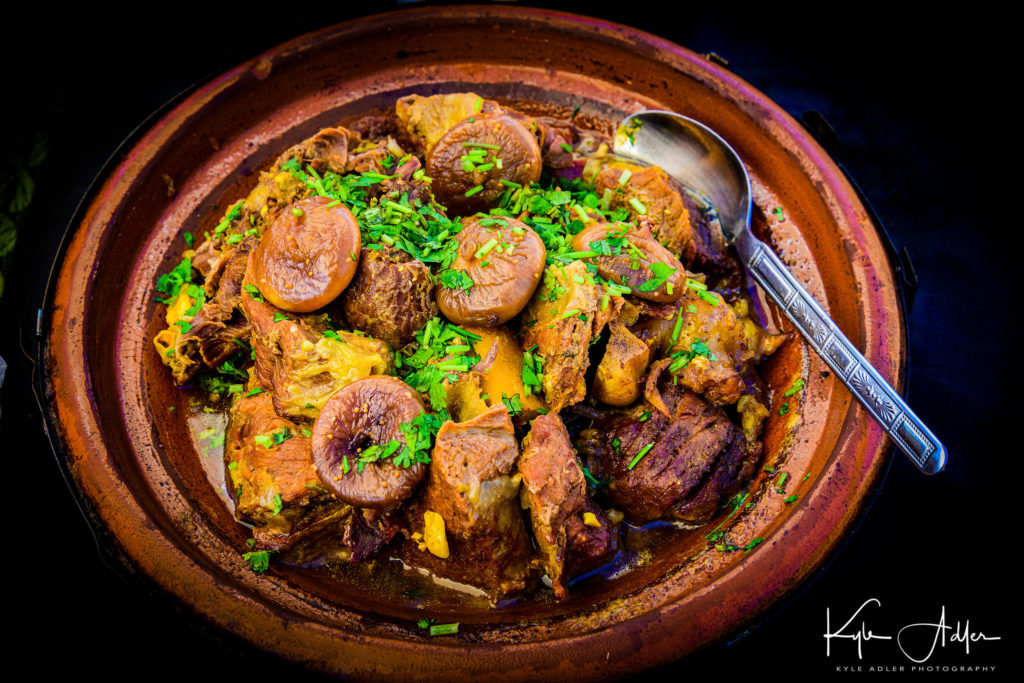
A beautiful tagine (Moroccan stew) served at lunch during our hike. We were amazed by the flavor and appearance of this dish, especially given our location at a tiny rooftop café in a remote mountain village. Capturing photos of food is rarely easy and certainly was a challenge in dazzlingly bright sunlight. I moved the tagine under a canopy, positioned a black placemat behind it, and shot from an oblique angle to bring out the contrasting colors and textures in the dish. During post-processing, I cropped a bit more tightly and darkened the background to make it completely black.
Leaving Marrakesh behind, we traveled to Casablanca, our final stop before returning home.
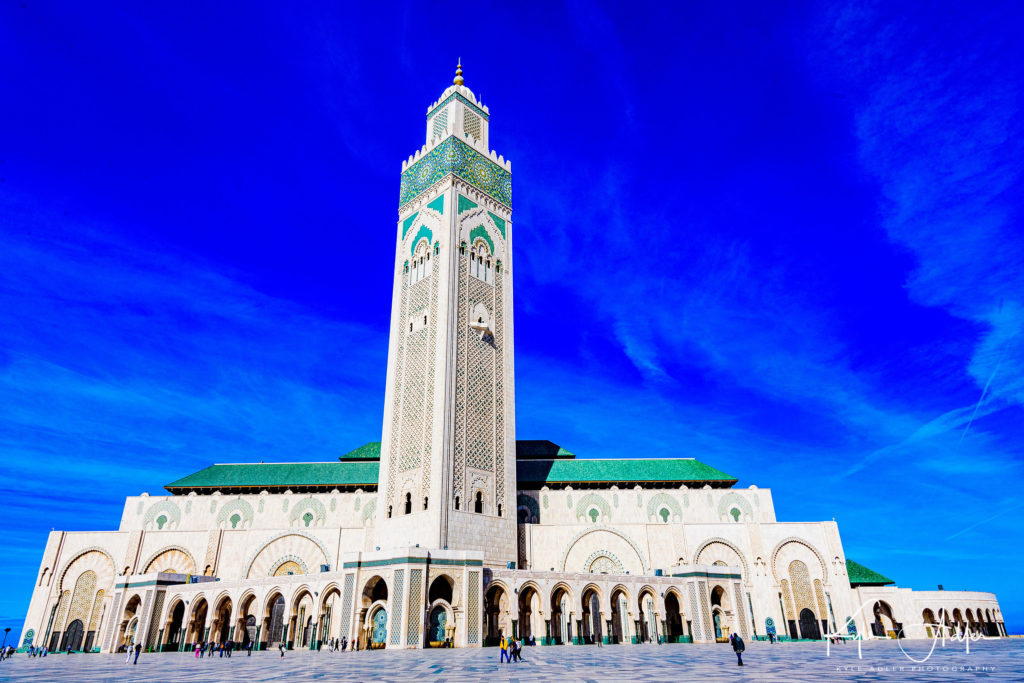
The Hassan II Mosque in Casablanca is the world’s third-largest mosque, accommodating 105,000 worshipers. Only the mosques in Mecca and Medina are bigger. Photographing very large and tall buildings poses a challenge. To include the whole structure a very wide-angle lens is required, but if the camera is tilted up or down even a little bit, the lines of the building are distorted. Here I used an ultrawide lens but ensured the camera was kept exactly level to the ground to minimize distortion.
You can see more of my images from our Morocco adventure here: https://www.kadlerphotography.com/Travel-Photography/Morocco.
Have you traveled and photographed in Morocco? Please share your experiences, and images, by commenting on this post!

